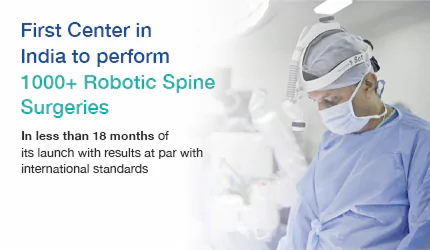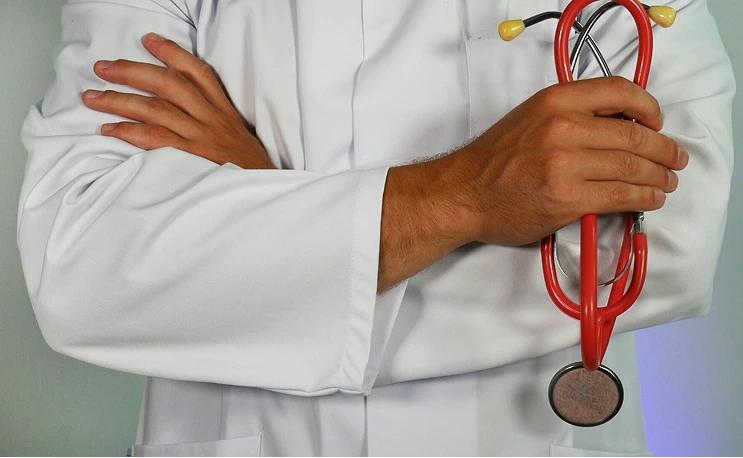When Scoliosis Becomes More Than a Curve
If you're reading this, you or a loved one is likely facing one of the most challenging spine conditions that exists. Severe thoracic scoliosis in adults isn't just about having a curved spine – it can mean struggling to breathe, chronic pain that affects every aspect of daily life, and a visible deformity that impacts both physical function and self-confidence.
When your spine has curved so severely that your rib cage is twisted, your lungs are compressed, and simpler surgeries won't provide adequate correction, your doctor may have mentioned vertebral column resection (VCR). This is one of the most complex spine surgeries performed, but for the right patients, it can be life-changing.
Understanding Severe Adult Thoracic Scoliosis
What This Means for Patients
Thoracic scoliosis affects the middle section of your spine, where your ribs attach. In severe cases, the spine doesn't just curve sideways – it also rotates, creating a three-dimensional deformity that can dramatically impact your life:
Physical appearance changes:
-
Visible rib hump on one side
-
Uneven shoulders and waist
-
Leaning to one side
-
Chest wall deformity
Functional problems:
-
Difficulty breathing due to compressed lungs
-
Chronic back pain and muscle fatigue
-
Balance problems
-
Reduced stamina and exercise tolerance
Potential neurological issues:
-
Numbness or weakness in legs
-
In rare cases, bladder or bowel problems
How Adults Develop Severe Scoliosis?
Two main types of adult scoliosis may require VCR
-
Adult Idiopathic Scoliosis: This is when scoliosis that started in adolescence continues to worsen into adulthood. What might have been a manageable curve at age 16 can become severe and rigid by age 40 or 50.
-
Degenerative Scoliosis: This develops later in life as the spine's discs and joints wear out unevenly, causing the spine to collapse and curve. This type often progresses more rapidly and can cause significant pain.
When Curves Become "Rigid"
A key factor in determining treatment is whether your curve is flexible or rigid. Rigid curves:
-
Don't straighten when you bend sideways
-
Don't improve with traction or positioning
-
Are often greater than 80-90 degrees
-
May have been present for many years
-
Require more aggressive surgical correction
Advanced Diagnosis at MIRSS
Evaluating severe scoliosis requires comprehensive imaging and assessment:
-
Whole spine X-rays to measure curve magnitude and flexibility
-
High-resolution CT scans if needed to assess bone quality and three-dimensional deformity
-
MRI scans to evaluate spinal cord and nerve compression
-
Pulmonary function tests to assess breathing capacity
-
3D spinal modeling for precise surgical planning
This thorough evaluation helps determine whether VCR is necessary and allows for detailed surgical planning using advanced robotic systems.
Treatment Options: From Conservative to Complex Surgery
When Simpler Approaches Aren't Enough
Most adult scoliosis can be treated with
-
Physical therapy and bracing (for mild curves)
-
Standard fusion surgery (for moderate curves)
-
Minimally invasive techniques (for certain curve patterns)
However, a VCR becomes necessary when
-
Curves exceed 80-90 degrees and are rigid
-
Previous surgeries have failed to provide adequate correction
-
Spinal cord compression is present
-
Breathing function is severely compromised
-
Standard fusion cannot achieve safe correction
Why is VCR different?
Vertebral column resection is fundamentally different from other spine surgeries because it involves:
-
Complete removal of one or more vertebrae
-
360-degree reconstruction of the spine
-
Dramatic realignment that can correct curves by 50-70 degrees
-
Complex stabilisation with extensive hardware
This isn't a surgery to consider lightly – it's reserved for cases where the benefits of major correction outweigh the significant risks involved.
Understanding Vertebral Column Resection (VCR)
What does the Surgery involve?
VCR is essentially rebuilding a section of your spine. The process includes:
Resection Phase:
-
Complete removal of one or more vertebrae (the entire bone, not just part of it)
-
Removal of adjacent discs
-
Careful protection of the spinal cord and major blood vessels
Reconstruction Phase:
-
Closing the gap created by vertebral removal
-
Correcting the three-dimensional deformity
-
Stabilising with rods, screws, and bone grafts
-
Ensuring the spinal cord is not compressed in the new position
The Challenge: During the correction, the spine is essentially "unstable" while being realigned, making this one of the most technically demanding procedures in spine surgery.
Advanced Robotic Technology at MIRSS
Given the complexity of VCR, advanced technology plays a crucial role in enhancing safety and precision:
Robotic-Assisted Surgery
Our MazorX Stealth Edition (Medtronic) – a 3rd generation spine robot with integrated navigation capabilities – provides:
-
Precise preoperative planning using 3D models of your specific deformity
-
Real-time surgical guidance during bone removal and hardware placement
-
Enhanced accuracy in screw placement through severely deformed anatomy
-
Improved safety in this high-risk procedure
Intraoperative Imaging
High-resolution cone beam CT during surgery allows:
-
Real-time verification of spinal cord decompression
-
Immediate assessment of correction achieved
-
Confirmation of proper hardware placement
Specialised Surgical Environment
Our state-of-the-art modular operating theatres feature:
-
Integrated robotic and imaging systems
-
Advanced spinal cord monitoring capabilities
-
Optimal setup for complex, lengthy procedures
The Surgical Process at MIRSS
Before Surgery
Extensive preparation includes:
-
Comprehensive medical clearance, including cardiac and pulmonary evaluation
-
Detailed surgical planning using robotic planning software
-
Blood bank preparation for this major procedure
-
Discussion with our multidisciplinary team, including dedicated spine anaesthesia specialists
During Surgery
VCR may take anywhere from 4-10 hours, depending on complexity and challenges and involves:
-
Anaesthesia: Our specialised spine anaesthesia team provides comprehensive care for this lengthy, complex procedure.
-
Positioning: Careful positioning to optimise surgical access while protecting all pressure points.
-
Exposure: Extensive surgical exposure is required to access the vertebrae to be removed.
-
Neuromonitoring: Continuous intraoperative neuromonitoring throughout the procedure to protect spinal cord function.
-
Robotic-Guided Resection: Precise removal of vertebrae using robotic navigation to protect vital structures.
-
Correction: Gradual, controlled correction of the spinal deformity.
-
Stabilisation: Placement of extensive instrumentation using robotic guidance for optimal accuracy.
-
Final Assessment: Comprehensive imaging to confirm adequate correction and proper hardware placement.
Our specialised OR staff, experienced in complex deformity surgery, coordinate throughout this demanding procedure.
Recovery: What to Expect
In the Hospital
-
Hospital stay typically 2-3 days (depends on patient to patient)
-
Initial ICU monitoring may be required
-
Comprehensive pain management with specialised protocols
-
Early mobilisation with physical therapy guidance
-
Respiratory therapy to prevent pneumonia
The Recovery Timeline
First 2 Weeks
-
Initial wound healing
-
Basic mobility with assistance
-
Pain management and medication adjustment
-
Monitoring for any complications
Weeks 2-8
-
Gradual increase in walking distance
-
Beginning of formal rehabilitation
-
Continued restrictions on lifting and bending
-
Follow-up imaging to assess early healing
Months 2-6
-
Progressive strengthening exercises
-
Gradual return to daily activities
-
Continued fusion healing process
-
Regular monitoring of correction maintenance
6-12 Months
-
Solid fusion is typically achieved
-
Return to appropriate activities
-
Assessment of final correction
-
Long-term activity planning
Rehabilitation with MIRSS
Our dedicated spine physiotherapy team creates comprehensive recovery programs focusing on:
-
Respiratory rehabilitation to optimise lung function
-
Core strengthening to support the new spinal alignment
-
Balance and coordination training
-
Gradual activity progression appropriate for extensive fusion
Realistic Recovery Expectations
What improves
-
Breathing capacity often increases significantly
-
Spinal alignment is dramatically improved
-
Chronic pain typically decreases
-
Overall function usually improves
What to understand
-
Full recovery takes 6-12 months
-
Some activity restrictions may be permanent
-
Adjacent-level stress may develop over time
-
Revision surgery is sometimes needed
Warning Signs to Watch For
Contact your doctor immediately if you experience:
-
Increasing back pain or new neurological symptoms
-
Breathing difficulties or chest pain
-
Signs of infection (fever, wound problems)
-
New weakness in arms or legs
-
Any bladder or bowel control issues
Success Rates and Long-term Outcomes
VCR has success rates when performed by experienced teams:
-
Significant curve correction (typically 50-70% improvement)
-
Improved breathing function in most patients
-
Reduced pain compared to pre-surgery levels
-
Enhanced quality of life for appropriately selected patients
Important considerations:
-
This is a major surgery with inherent risks
-
Complete recovery takes many months
-
Some functional limitations will remain
-
Long-term follow-up is essential
Risks and Complications
Given the complexity of VCR, potential risks include:
-
Neurological injury (risk of paralysis, though rare with modern techniques)
-
Bleeding requiring transfusion
-
Infection requiring additional treatment
-
Hardware failure necessitating revision surgery
-
Pseudarthrosis (failure of fusion)
-
Adjacent-level problems over time
The robotic technology and extensive experience at MIRSS help minimise these risks, but they cannot be eliminated entirely.
Why Choose MIRSS for Complex Deformity Surgery?
Comprehensive Expertise
-
Experienced deformity specialists with extensive VCR experience
-
Multidisciplinary team including specialised anaesthesia, nursing, and rehabilitation specialists
-
Specialised OR staff trained in complex deformity procedures
Advanced Technology
-
Advanced spine robotic surgery with integrated navigation
-
Intraoperative high-resolution imaging for real-time surgical guidance
-
Comprehensive neuromonitoring for spinal cord protection
-
State-of-the-art facilities designed for complex spine procedures
Patient-Centered Care
-
Thorough evaluation to ensure VCR is appropriate
-
Detailed surgical planning customised to your specific deformity
-
Comprehensive rehabilitation programs
-
Long-term follow-up and support
Questions to Ask Your Doctor
Before considering VCR, important questions include:
-
Are there any less invasive options for my specific case?
-
What degree of correction can realistically be achieved?
-
What are my specific risks based on my age and health?
-
What will my functional limitations be after surgery?
-
What happens if I choose not to have surgery?
Making This Difficult Decision
The decision to undergo VCR is never easy. It requires weighing:
-
Current quality of life vs potential improvement
-
Progression of deformity if left untreated
-
Surgical risks vs benefits
-
Your age and overall health
-
Personal goals and expectations
This decision should never be rushed and benefits from multiple opinions and thorough discussion with experienced spine deformity specialists.
Moving Forward
Severe thoracic scoliosis requiring VCR represents one of the most challenging conditions in spine surgery. However, for appropriately selected patients, this surgery can provide dramatic improvement in function, breathing, pain, and quality of life.
The key to success lies in:
-
Accurate diagnosis and assessment
-
Careful patient selection
-
Expert surgical execution
-
Comprehensive perioperative care
-
Dedicated rehabilitation
While VCR is a major undertaking, advances in robotic technology, surgical techniques, and perioperative care have made this life-changing surgery safer and more effective than ever before.
At MIRSS (Manipal Institute of Robotic Spine Surgery), Bangalore, we specialise in the most complex spinal deformity cases. Our team combines extensive experience in VCR procedures with the latest robotic surgical technology to provide optimal outcomes for patients with severe scoliosis. Our comprehensive approach – from detailed preoperative planning to extensive rehabilitation support – is designed to help you achieve the best possible result from this major surgery. From your initial consultation through long-term follow-up, our dedicated teams in Bangalore are committed to supporting you through every step of this challenging but potentially life-changing journey.







